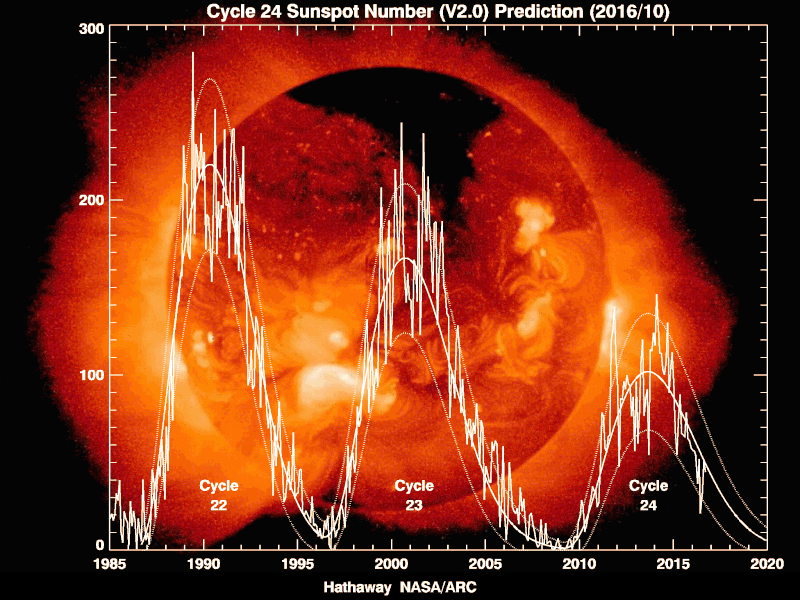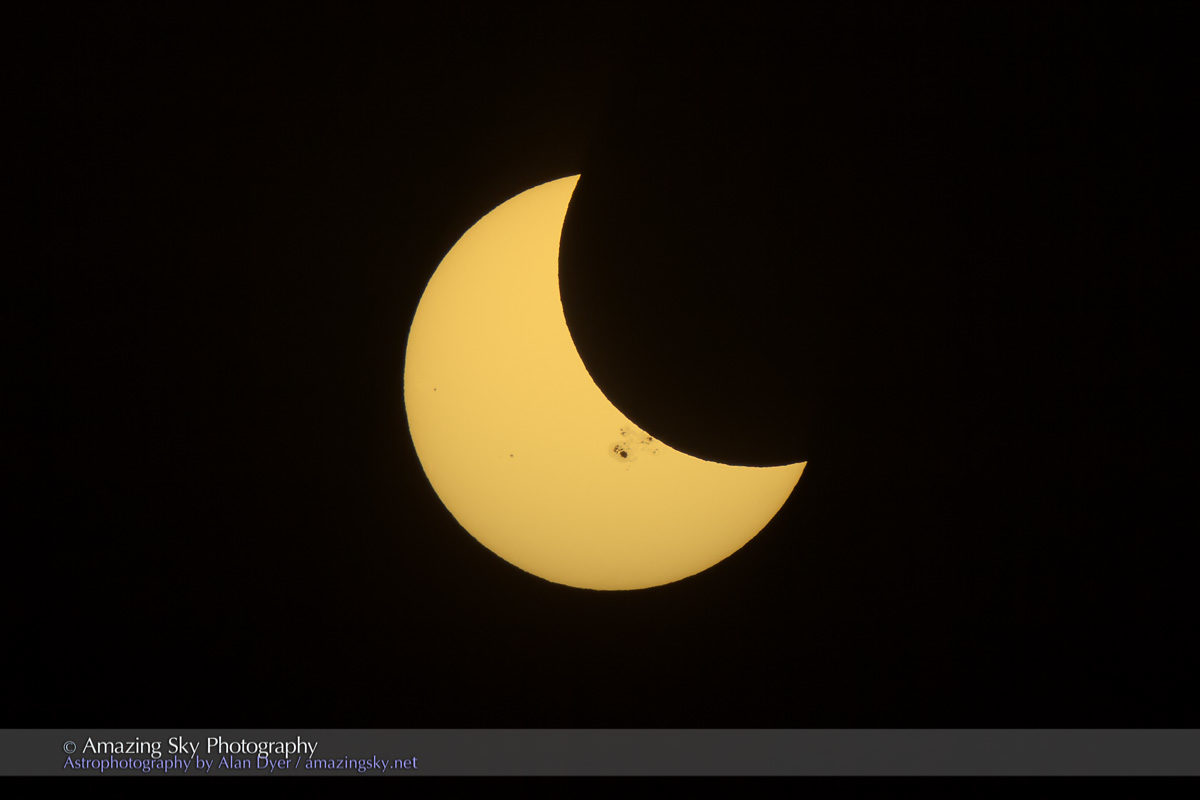
The strange tale of Solar Cycle #24 is ending with an expected whimper: as of May 8th, the Earthward face of the Sun had been spotless for 73 out of 128 days thus far for 2018, or more than 57% of the time. This wasn't entirely unexpected, as the solar minimum between solar cycle #23 and #24 saw 260 spotless days in 2009 - the most recorded in a single year since 1913.
Cycle #24 got off to a late and sputtering start, and though it produced some whopper sunspots reminiscent of the Sol we knew and loved on 20th century cycles past, it was a chronic under-performer overall. Mid-2018 may see the end of cycle #24 and the start of Cycle #25... or will it?
One nice surprise during Cycle #24 was the appearance of massive sunspot AR 2192, which popped up just in time for the partial solar eclipse of October 23rd, 2014. Several times the size of the Earth, the spot complex was actually the largest seen in a quarter century. But just as "one swallow does not a Summer make," one large sunspot group couldn't save Solar Cycle #24.

A big gaseous fusion bomb, the Sun actually rotates once every 25 days near its equator, and 34 days at the poles. The Sun's rotational axis is also tipped 7.25 degrees relative to the ecliptic, with the northern rotational pole tipped towards us in early September, while the southern pole nods towards us in early March.
What's is store for Cycle #25? One thing's for certain: if the current trend continues, with spotless days more the rule than the exception, we could be in for a deep profound solar minimum through the 2018 to 2020 season, the likes of which would be unprecedented in modern astronomy.
Fun fact: a similar dearth of sunspots was documented during the 1645-1715 period referred to as the Maunder Minimum. During this time, crops failed and the Thames River in London froze, making "frost fairs" along its frozen shores possible. Ironically, the Maunder Minimum also began just a few decades after the dawn of the age of telescopic astronomy. During this time, the idea of "spots on the Sun" was regulated to a controversial, and almost mythical status in mainstream astronomy.
Full story here



Comment: And with increasingly brutal winters and extreme weather events the similarities to the Maunder Minimum, and other periods of low solar activity, are worryingly apparent. Some observers are also noticing that its not just the sun exhibiting unusual behaviour:
- Yale's Two Climate Bombs Point to Impending Ice Age
- Strange behavior coming from the sun's gamma rays, cause unknown
- Solar minimum: The sun is getting quieter... and its rotation is slowing down
- Revision to 400-year sunspot record makes current solar cycle weakest in 200 years
- Massive flooding in Europe during the Little Ice Age
- Erratic seasons and extreme weather devastating crops around the world
Also check out SOTT radio's: Behind the Headlines: Earth changes in an electric universe: Is climate change really man-made?And our monthly documentary: SOTT Earth Changes Summary - April 2018: Extreme Weather, Planetary Upheaval, Meteor Fireballs